15 Ways to Speed Up a Slow Windows 10 PC

If your PC running Windows 10 is becoming slow or constantly lags, you’re at the right place as today we will fix the issue altogether. Although Windows 10 is one of the best-operating systems out there, with time it has become slow and now your PC lags a lot, worse of all it freezes suddenly. You will notice that when you installed a new copy of Windows, the system was a lot faster as compared to the current state.
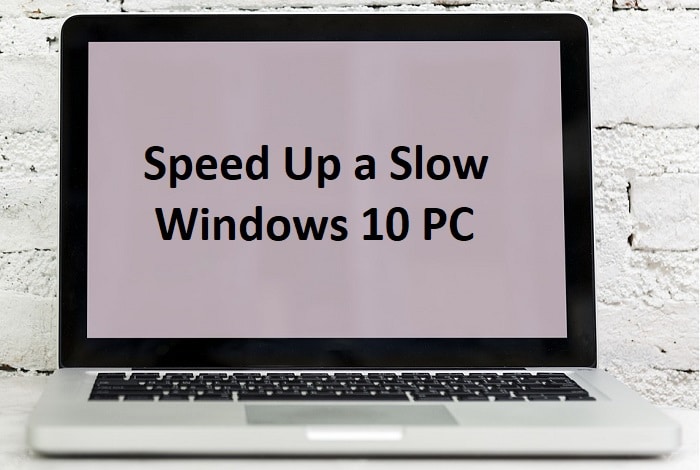
Now the lagging or slow PC issue is generally caused by performance issues under Windows 10, but sometimes it can also be caused by bad memory (RAM), damaged hard disk, virus or malware etc. So without wasting any time let’s see how to actually Seed Up a Slow Windows 10 PC with the help of below-listed methods.
15 Ways to Speed Up a Slow Windows 10 PC
Make sure to create a restore point just in case something goes wrong.
Method 1: Disable Animation and adjust for best performance
1. Press Windows Key + R then type sysdm.cpl and hit Enter to open System Properties.
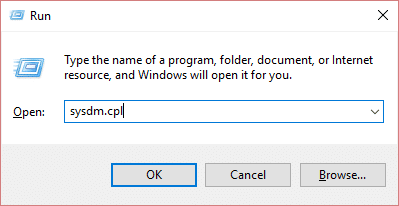
2. Switch to Advanced tab then click on Settings under Performance.
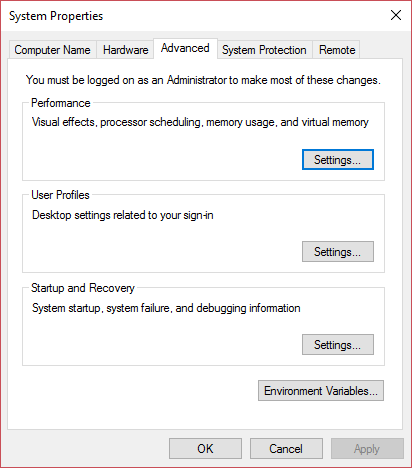
3. Under Visual Effects checkmark “Adjust for best performance” would automatically disable all the animations.
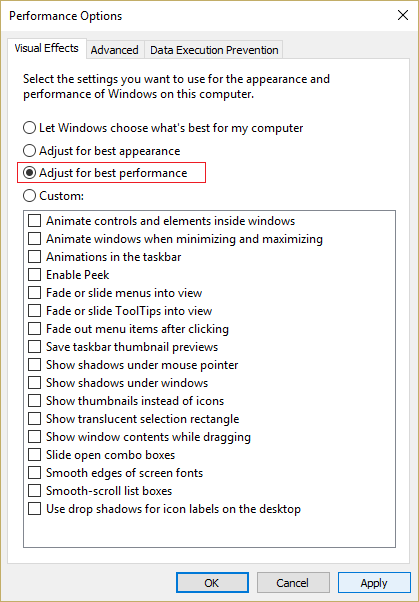
4. Click Apply, followed by OK.
5. Reboot your PC to save changes and see if you’re able to Speed Up a Slow Windows 10 PC.
Method 2: Disable Unnecessary Startup Programs
1. Press Ctrl + Shift + Esc keys together to open Task Manager and then switch to Startup.
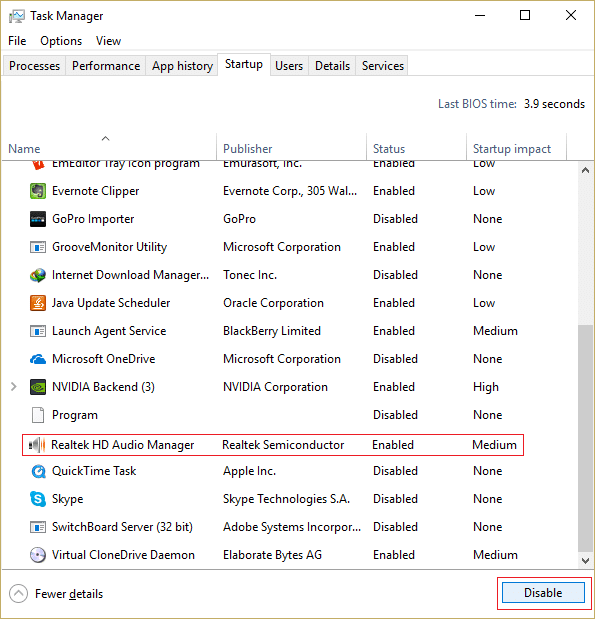
2. From the list, select the programs you don’t use and then click on the Disable button.
3. Do this for every unnecessary program, as you will only be able to disable one program at a time.

4. Close Task Manager and reboot your PC to save changes.
Method 3: Run CCleaner and Malwarebytes
1. Download and install CCleaner & Malwarebytes.
2. Run Malwarebytes and let it scan your system for harmful files. If malware is found, it will automatically remove them.
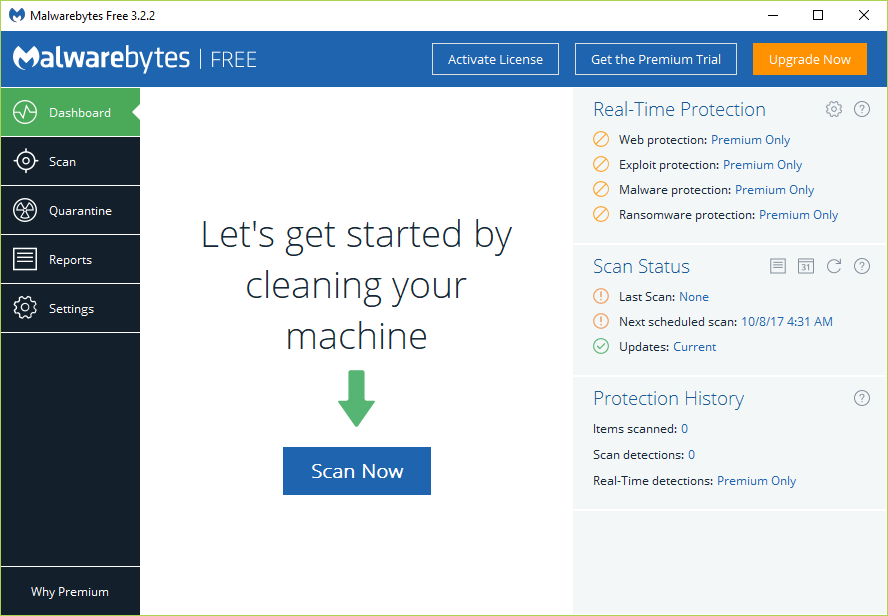
3. Now run CCleaner and select Custom Clean.
4. Under Custom Clean, select the Windows tab and checkmark defaults and click Analyze.
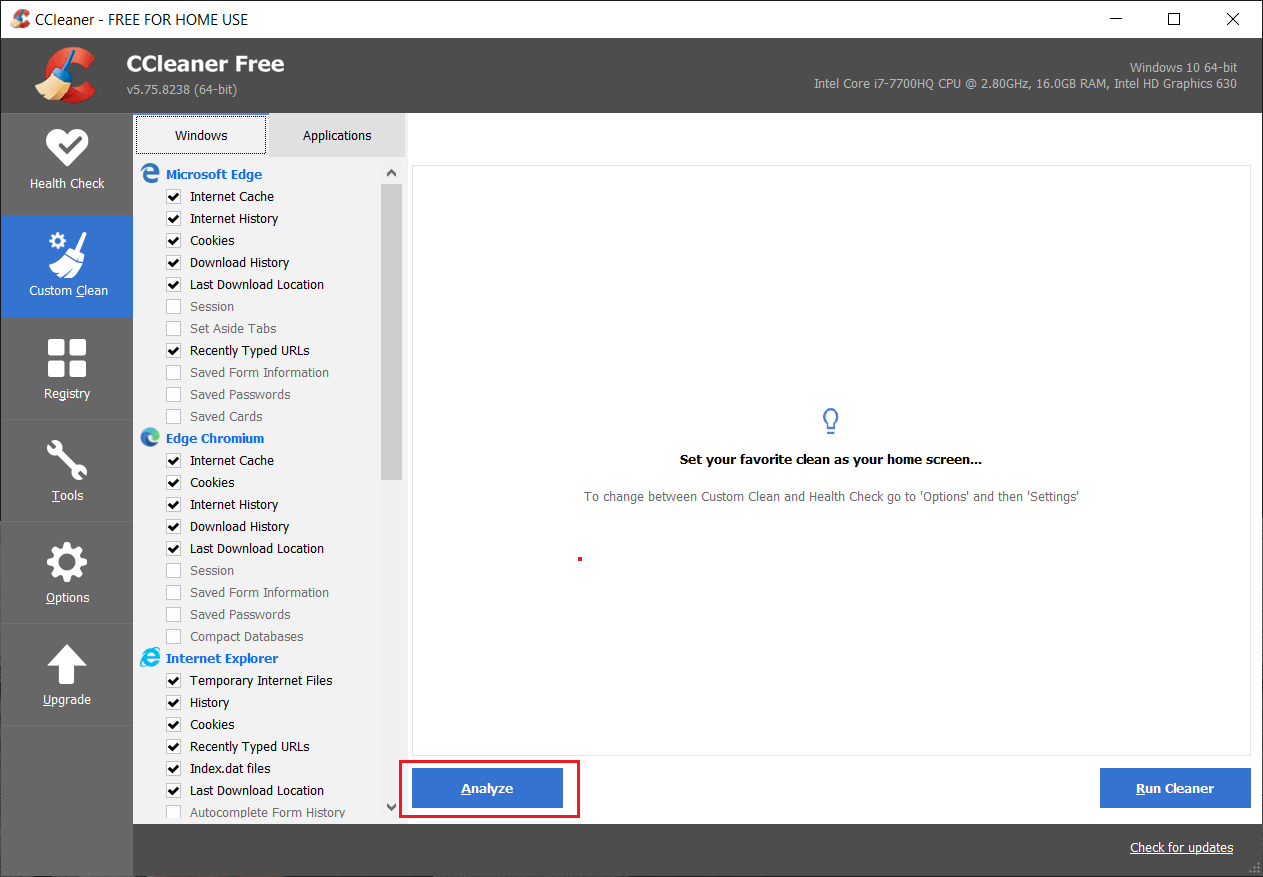
5. Once Analyze is complete, make sure you’re certain to remove the files to be deleted.
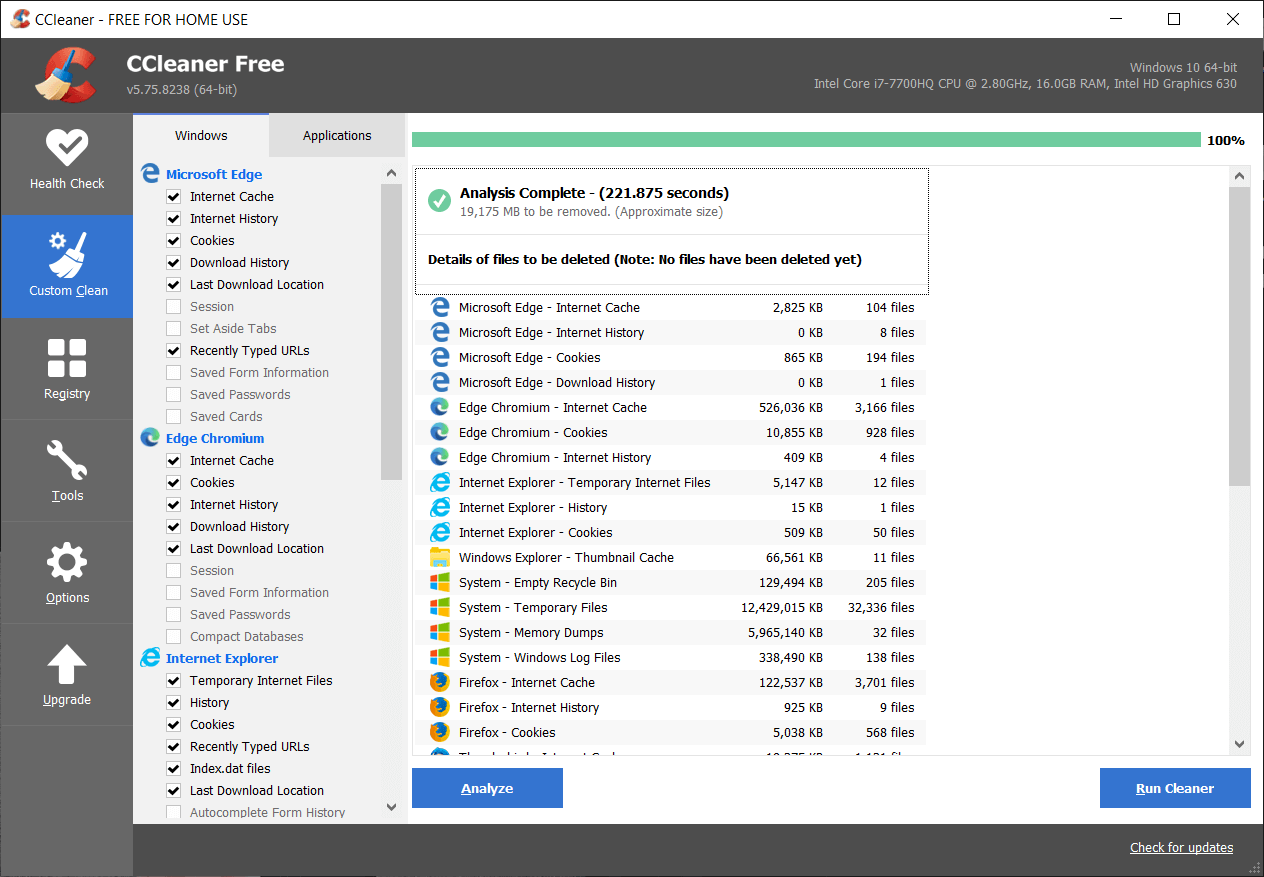
6. Finally, click on the Run Cleaner button and let CCleaner run its course.
7. To further clean your system, select the Registry tab, and ensure the following are checked:
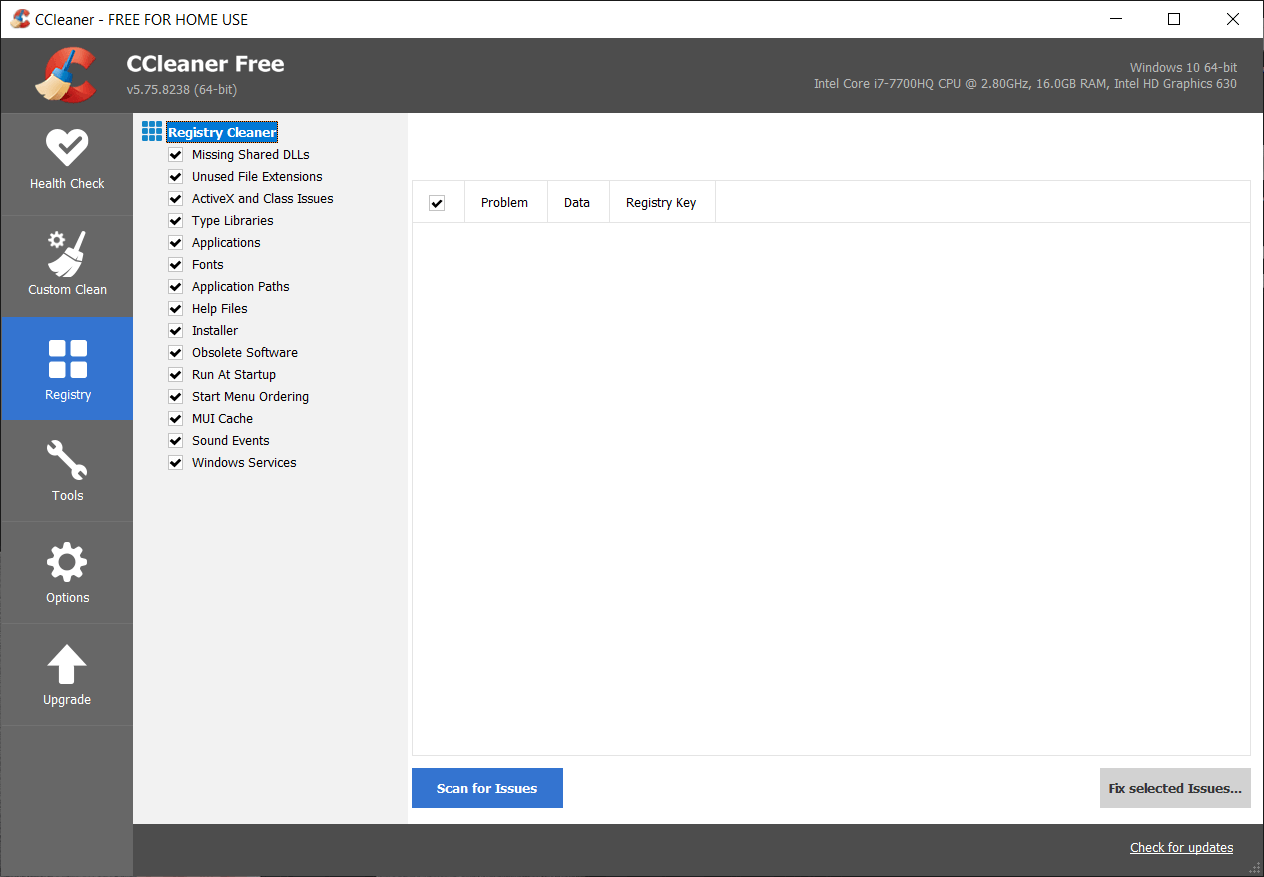
8. Click on the Scan for Issues button and allow CCleaner to scan, then click on the Fix Selected Issues button.
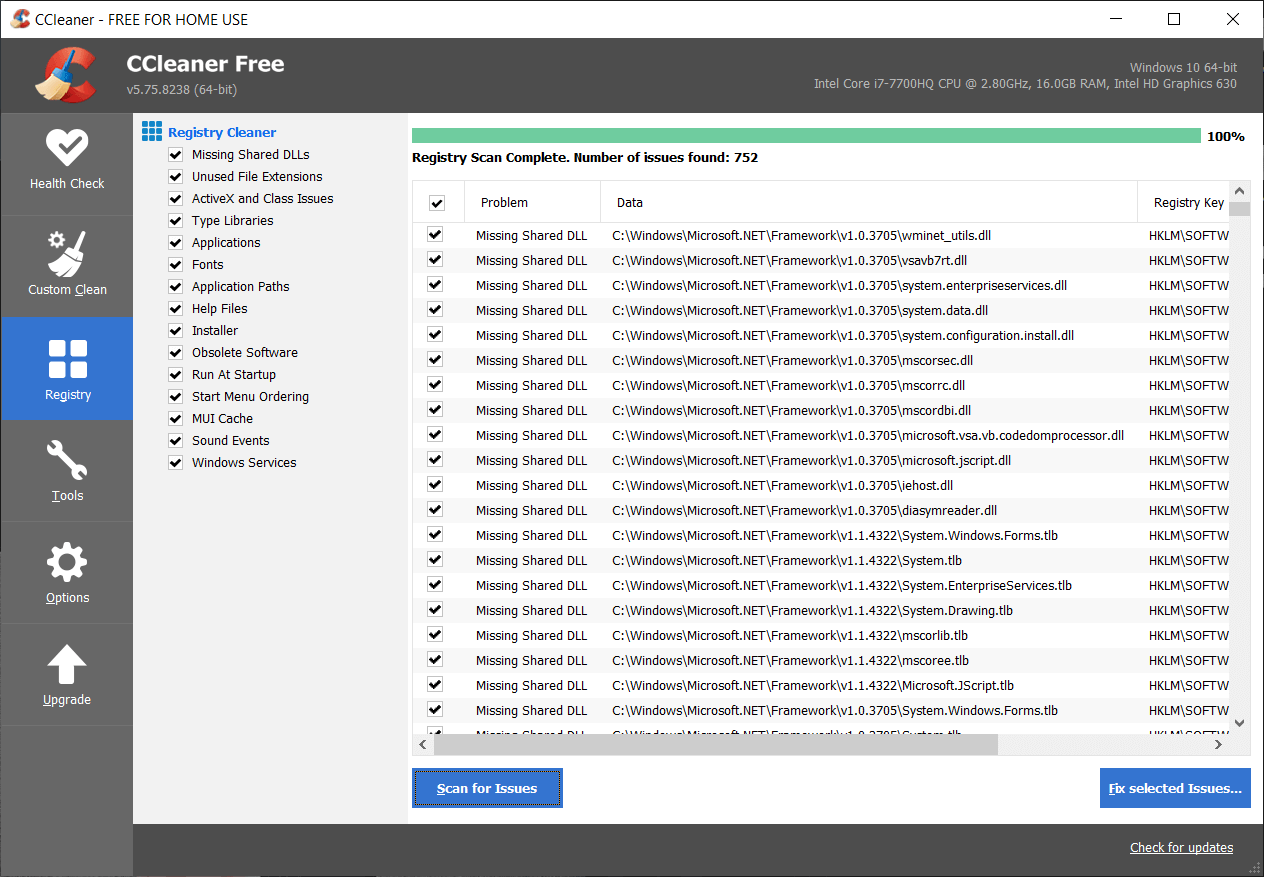
9. When CCleaner asks “Do you want backup changes to the registry?” select Yes.
10. Once your backup has completed, click on the Fix All Selected Issues button.
11. Restart your PC to save changes.
Method 4: Run Disk Cleanup and Error Checking
1. Go to This PC or My PC and right-click on the C: drive to select Properties.
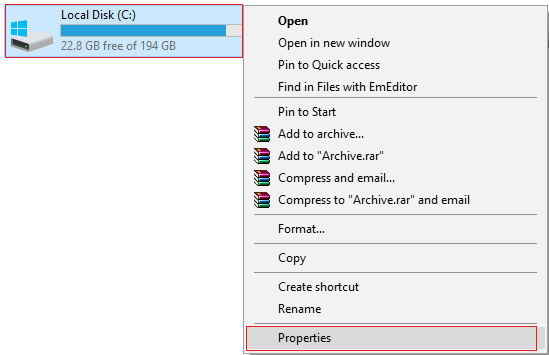
2. Now from the Properties window, click on Disk Cleanup under capacity.

3. It will take some time to calculate how much space Disk Cleanup will free.
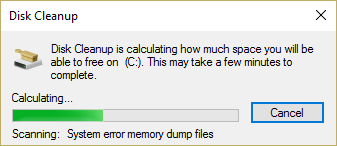
4. Now click Clean up system files in the bottom under Description.
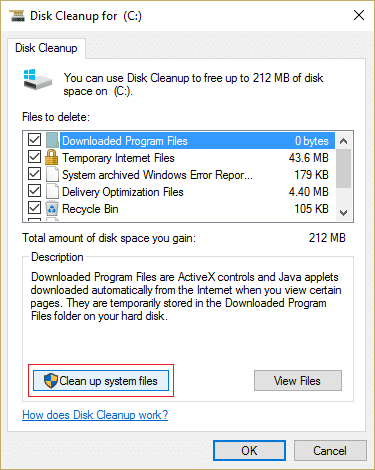
5. In the next window, make sure to select everything under Files to delete and then click OK to run Disk Cleanup. Note: We are looking for “Previous Windows Installation(s)” and “Temporary Windows Installation files” if available, make sure they are checked.
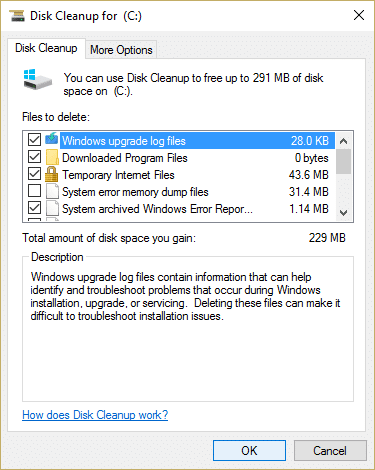
6. Wait for Disk Cleanup to complete and see if you can Speed Up a Slow Windows 10 PC, if not then continue.
7. Open Command Prompt. The user can perform this step by searching for ‘cmd’ and then press Enter.
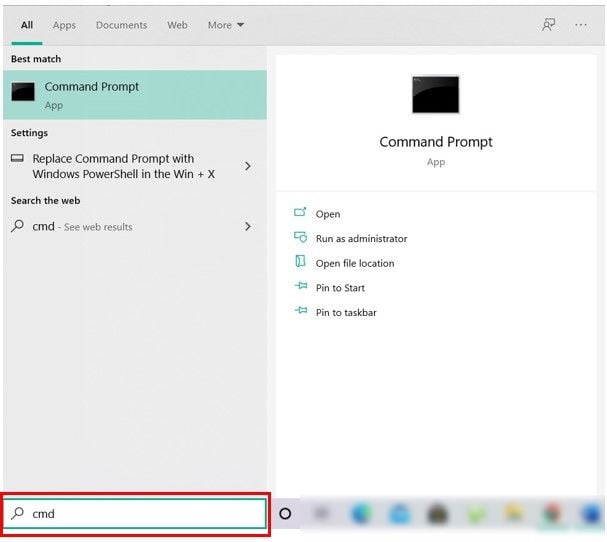
8. In the cmd window type the following command and hit Enter:
chkdsk C: /f /r /x

Note: In the above command C: is the drive on which we want to check disk, /f stands for a flag which chkdsk the permission to fix any errors associated with the drive, /r let chkdsk search for bad sectors and perform recovery and /x instructs the check disk to dismount the drive before beginning the process.
9. It will ask to schedule the scan in the next system reboot, type Y and hit enter.
Please keep in mind that CHKDSK process can take up a lot of time as it has to perform many system-level functions, so be patient while it fixes system errors and once the process is finished it will show you the results.
Method 5: Disable Fast Startup
1. Press Windows Key + R then type control and hit Enter to open Control Panel.

2. Click on Hardware and Sound then click on Power Options.
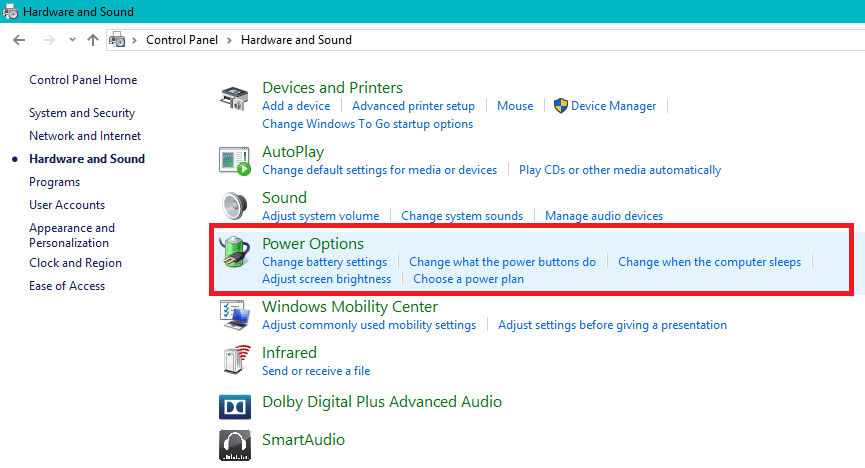
3. Then from the left window pane select “Choose what the power buttons do.“
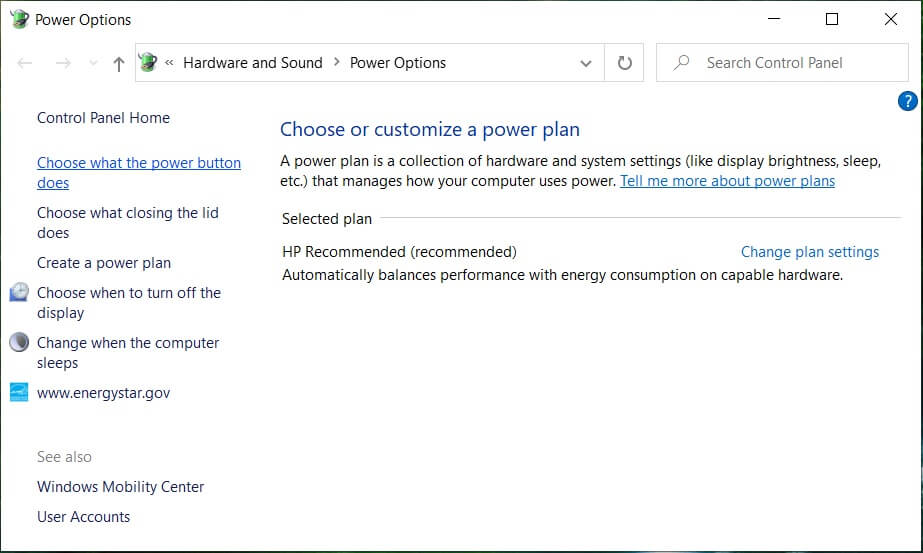
4. Now click on “Change settings that are currently unavailable.“
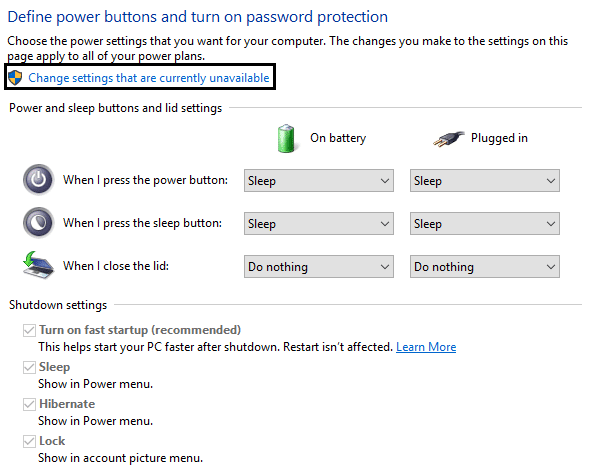
5. Uncheck “Turn on fast startup” and click on Save changes.
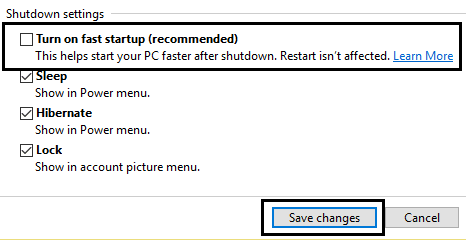
6. Reboot your PC to save changes and see if you’re able to Speed Up a Slow Windows 10 PC.
Method 6: Update Drivers
1. Press Windows Key + R then type devmgmt.msc and hit Enter to open Device Manager.
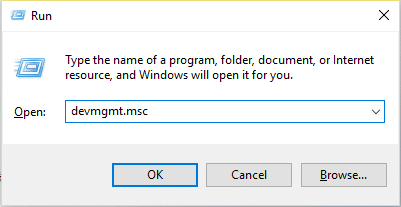
2. Next, make sure to right-click on any device with a yellow exclamation mark next to it.
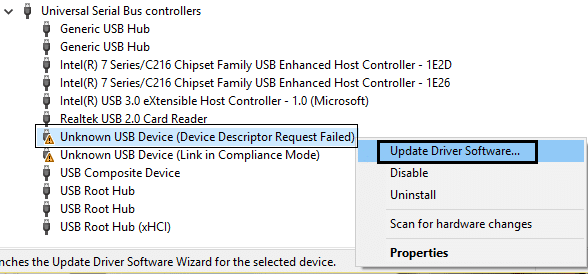
3. Select Update Driver and then click on Search automatically for updated driver software.
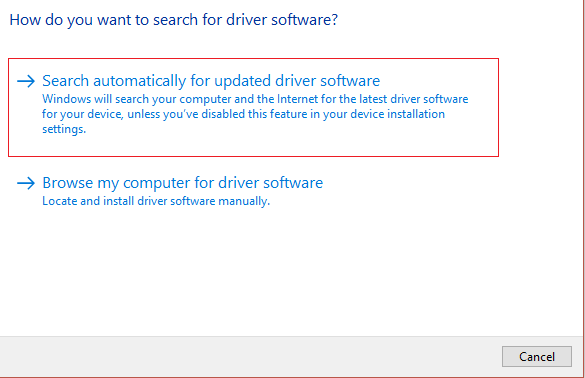
4. After the update, restart your PC and see if you’re able to fix the issue.
5. If not, then again right-click and select Update Driver.
6. This time, select “Browse my computer for driver software.”

7. Then click on “Let me pick from a list of available drivers on my computer.”
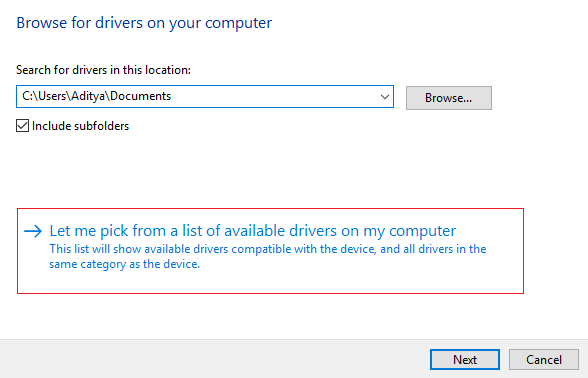
8. Select the appropriate driver from the list and click Next.
Note: It’s recommended you try the above process with each listed device driver.
9. Reboot your PC and see if you’re able to Speed Up a Slow Windows 10 PC.
Method 7: Run System Maintenance
1. Search for the control panel from the Start Menu search bar and click on it to open the Control Panel.

2. Now click on System and Security.
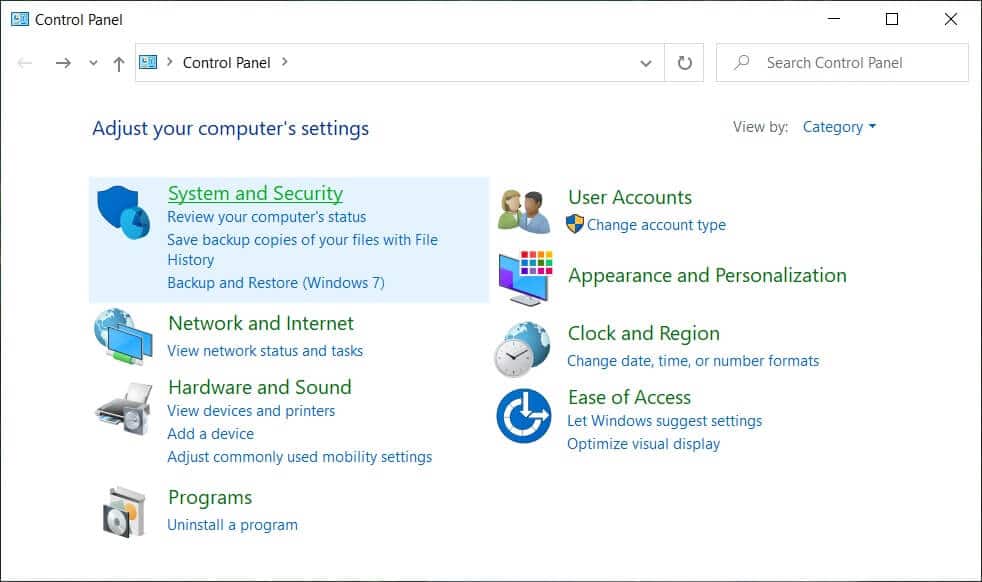
3. Next, click on Security and Maintenance.
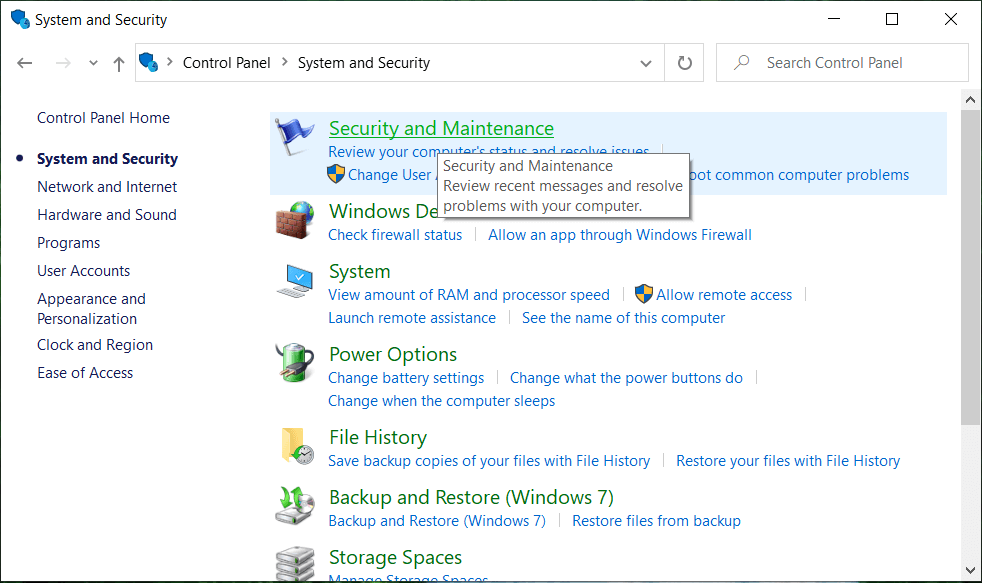
4. Expand Maintenance and under Automatic Maintenance click on “Start maintenance“.
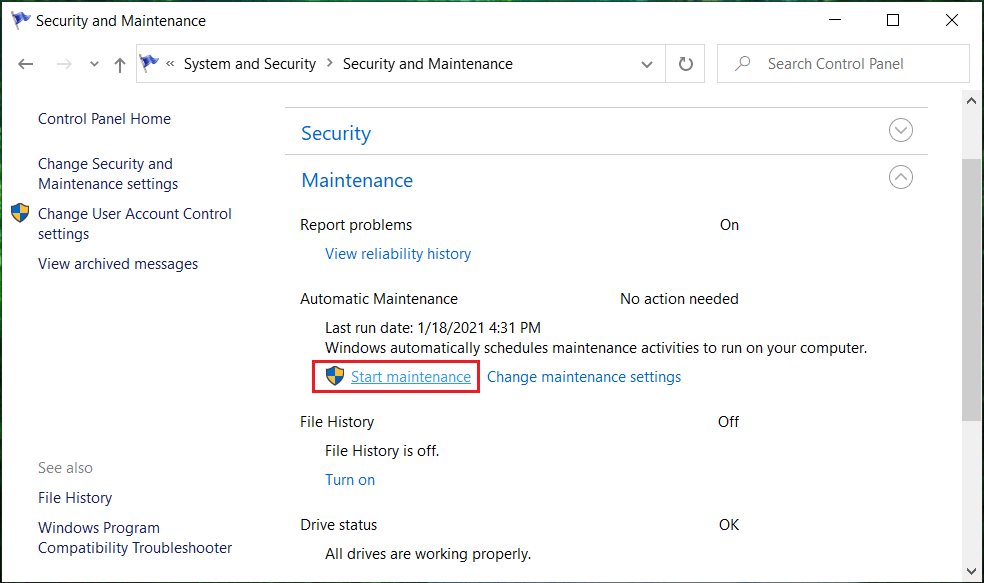
5. Let System Maintenace runs and sees if you’re able to Speed Up a Slow Windows 10 PC, if not then continue.
Method 8: Defragment Your Hard Disk
1. Type Defragment in the Windows Search box then click on Defragment and Optimize Drives.
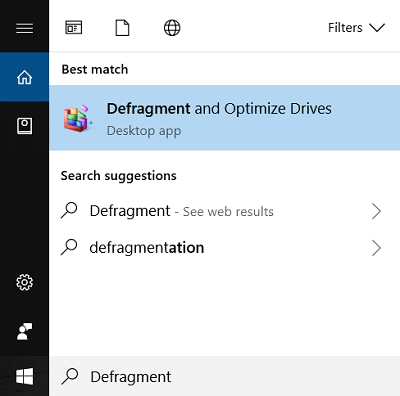
2. Select the drives one by one and click Analyze.
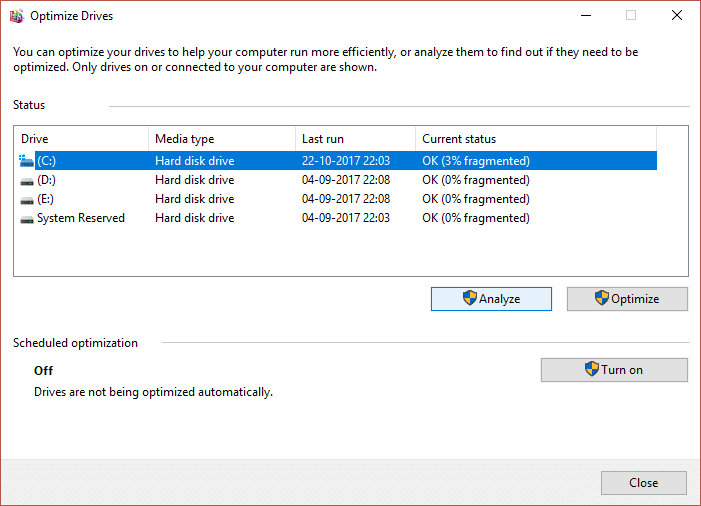
3. Similarly, for all the listed drives click Optimize.
Note: Don’t Defrag SSD Drive as it may reduce its life.
4. Reboot your PC to save changes and see if you’re able to Speed Up a Slow Windows 10 PC, if not then continue.
Method 9: Run System Maintenance Troubleshooter
1. Search for the control panel from the Start Menu search bar and click on it to open the Control Panel.
2. Search Troubleshoot and click on Troubleshooting.

3. Next, click on view all in the left pane.
4. Click and run the Troubleshooter for System Maintenance.

5. The Troubleshooter may be able to Speed Up a Slow Windows 10 PC.
Method 10: Disable Unwanted Extensions (Web Browser)
Extensions are a handy feature in chrome to extend its functionality, but you should know that these extensions take up system resources while they run in the background. In short, even though the particular extension is not in use, it will still use your system resources. So it’s a good idea to remove all the unwanted/junk extensions you might have installed earlier.
1. Open Google Chrome then type chrome://extensions in the address and hit Enter.
2. Now first disable all the unwanted extensions and then delete them by clicking on the delete icon.
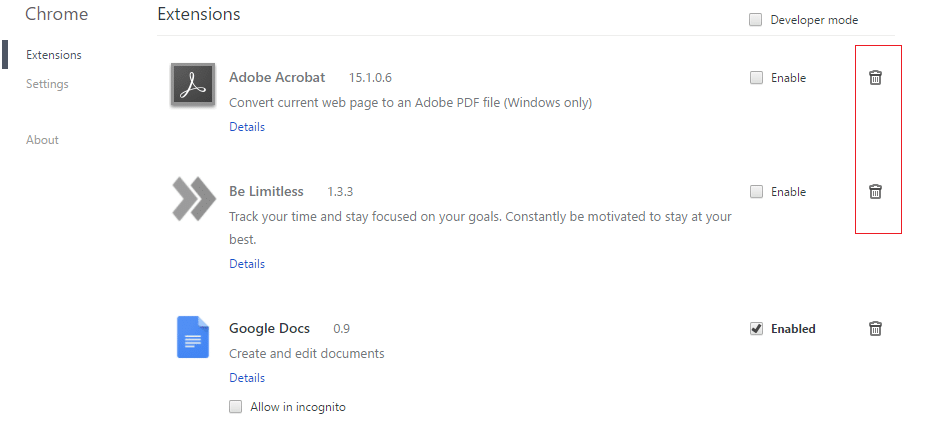
3. Restart Chrome and see if this help in making your PC faster.
Method 11: Change PageFile Size
1. Type performance in the Windows Search box and then click on “Adjust the appearance and performance of Windows.”

2. Switch to the Advanced tab and then click the Change button under Virtual Memory.
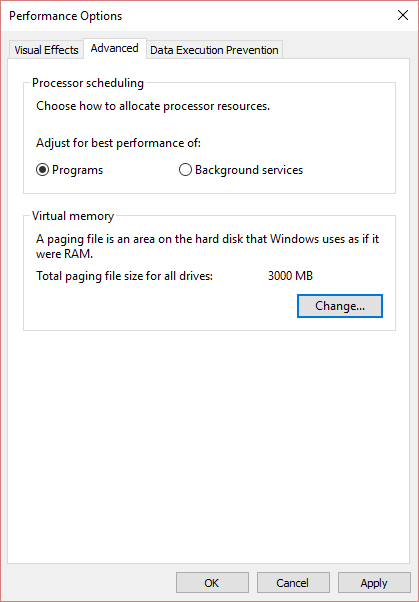
3. Uncheck “Automatically manage paging file size for all drivers.”

4. Highlight the drive on which Windows 10 is installed and then select the Custom size.
5. Set the Recommended values for fields: Initial size (MB) and Maximum size (MB).
6. Click OK, then click Apply followed by OK
7.Restart your PC and see if you’re able to Speed Up a Slow Windows 10 PC.
Method 12: Disable Windows 10 Tips
1. Press Windows Key + I to open Settings then click on System.
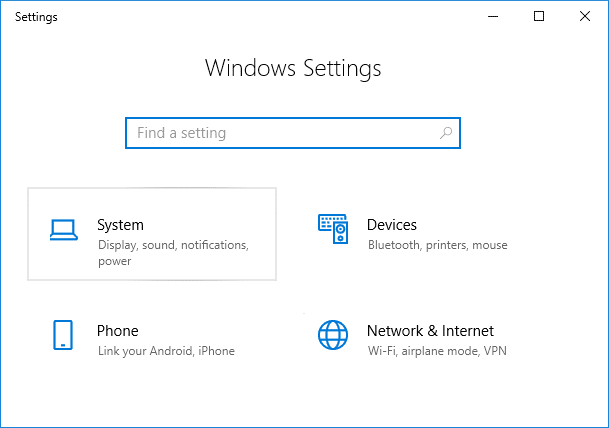
2. From the left-hand menu, select Notifications & actions.
3. Turn Off the toggle for “Get tips, tricks, and suggestions as you use Windows.”

4. Restart your PC.
Method 13: Set your Power Plan to High Performance
1. Right-click on Power icon then selects Power Options.
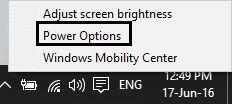
2. Click on Show additionals plans and select High Performance.
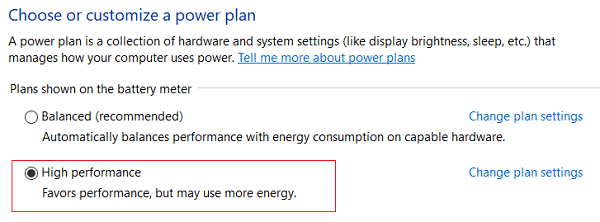
3. Close Settings and restart your PC.
Method 14: Turn Off Search Indexing
1. Type index in Windows Search then clicks on Indexing Options.
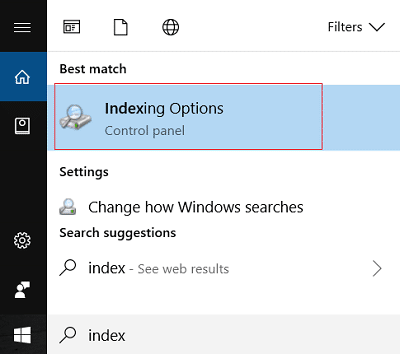
2. Click on Modify and click on Show all locations.
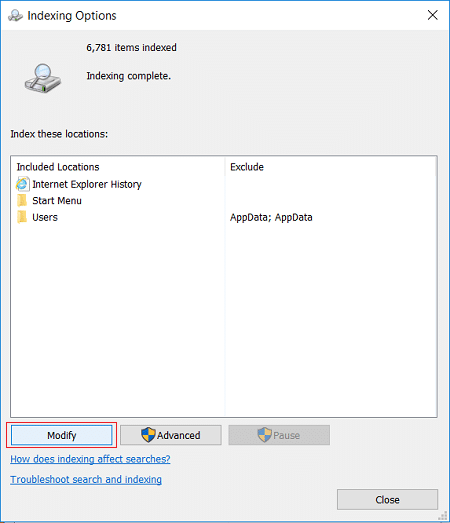
3. Make sure to uncheck all of your disk drives and click OK.
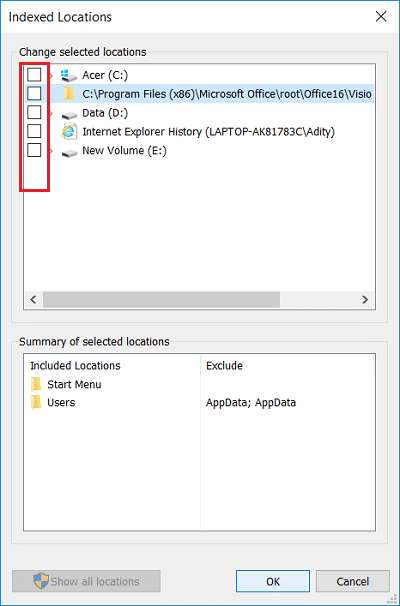
4. Then click Close and reboot your PC. Also, see if you’re able to Speed Up a Slow Windows 10 PC, if not then continue.
Method 15: Add more RAM and SSD
If your PC is still running slow and have tried all other options, you may need to consider adding more RAM. Please remove the old RAM and then install the new RAM’s to increase your system performance.
But if you are still facing the occasional lags or system freezes, then you may also consider adding an external SSD to speed up your PC.
Recommended:
That’s it you have successfully Seed Up a Slow Windows 10 PC but if you still have any questions regarding this post then feel free to ask them in the comment’s section.